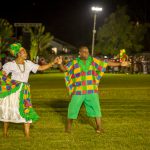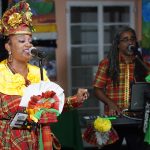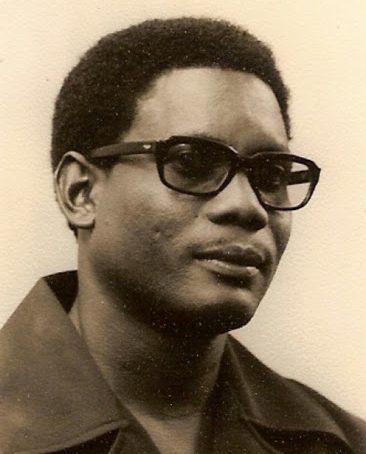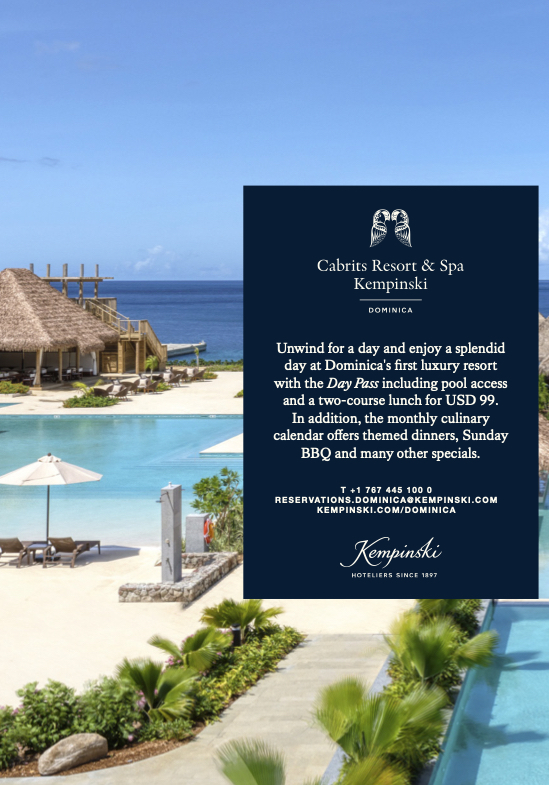I attended the Portsmouth Secondary School where, “The Formation of the West Indies”, was one of the first chapters in my 3rd Form Geography textbook. I can still hear the voice of my former Geography teacher, Ms. Grace Watty, as she explained the first and second great mountain building periods (Orogenesis) and the formation of the inner and outer arch of the Caribbean.
Having to put into perspective that this earth is estimated to be 4.5 billion (4,500,000,000) years old according to scientists, was a fascinating mental journey. Scientific literature indicated the oldest part of the Caribbean (Greater Antilles) began in an Epoch (geologic unit of time) called the Paleocene, which represents over 60 million years ago. Scientists also determined that the younger part of the Caribbean, The Lesser Antilles, sprang to life during the Miocene Epoch around 23 million years ago at the convergence of the eastern edge of the Caribbean Plate and the Atlantic Plate. Additionally, scientific research indicated that these activities were characterized by earthquakes, volcanoes, uplifts, sea level changes, erosion and all the natural processes we hear about today. As I recount, I cannot help but think that the chapter in that 3rd form book should read, “The Ongoing Formation of the West Indies.” After all, ninety million years from today the earth will still be 4.5 billion years old.
My pursuit of study in the field of Geology was triggered by my environment, growing up in the village of Bense, and my education in Dominica. Bense lies on the North Eastern section of Dominica in the parish of St. Andrew, to the north of the majestic Morne Diablotin. As a kid I would always admire the imposing presence of the green, often misty mountain. A mystical waterfall would magically appear, cascading off its north facing slope after heavy rainfalls, like a giant who had too much to drink and had to relieve himself of the excess water. The lessons learnt from Ms. Watty in 3rd form on the formation of the West Indies revealed to me that this mountain has more stories to tell than what meets the eye and I had to find out what information it holds.

St. Vincent’s La Soufriere Volcano erupted on Friday, April 9. (Photo Credit- UWI Seismic Research Center)
Today, we are bombarded with videos, news clips and other social media images in real time of one of those processes that continue to shape the Lesser Antilles. Available literature, indicate for the 5th time in its recorded history, spanning from the 1700s to today, La Soufriere Volcano of St. Vincent sprang to life. This is a reminder to us of the nature of the place we call home. True to all other natural powerful forces of nature, La Soufriere’s volcanic eruption has displaced tens of thousands of Vincentians and will continue to transform the physical and human environment.
The positive outcome of this is that it affords scientists, especially volcanologists and seismologists, the opportunity to study in real time the behaviors and signals that a volcano displays prior to an eruption and to better understand their internal and external composition. One of the fundamental laws of geology states; The present is the key to the past. This means that all the natural processes that occur today existed millions of years ago. If one understands the features created by these events today then one can better be able to piece together the stories of Morne Aux Diables, Morne Diablotin, Morne Trois Piton, Wotten Waven/Micotrin, Morne Watt, Valley of Desolation, Morne Anglais, Grande Soufriere Hills, and Plat Pays Volcanic Complex. These nine active volcanoes found in Dominica represent more than 50% of active volcanoes in the lesser Antilles according to available geologic literature.
These geologic processes may seem far apart in our human life span, however, when viewed from a geologic perspective, an eruption every 100 years, to me, is often and an eruption every 40 years is very often. Let us assume that in 23 million years, La Soufriere would have erupted once every one hundred years on average, that would be 230, 000 eruptions. Once every 40 years would be 575,000 eruptions. We are now witness to the volume of ash being ejected. That should give an idea of how the island grew from ash and lava deposits over its 23 million years of existence. In nature however, there are countless variables such of periods of dormancy, varying cycles of activity, uplifts, erosion, sea level changes, climatic changes, etc. that all play a part in shaping the islands.
The bottom line is, mother nature will do what it must do, and we can only be spectators at a distance. The same forces that have made Dominica the tall green majesty she is, with 365 rivers, second largest boiling lake in the world, countless hot sulphur baths, the fertile soils and the best black sand beaches in the Caribbean are the same natural forces that could cause displacement and destruction to life and property. The same source of the creation of St. Vincent that provided her with the fertile land that the people so dearly love is sadly the same force we see today. The growth of the islands in the Lesser Antilles is an ongoing process marked by the frequent events of earthquakes and the occasional volcanic eruption. Like we witnessed over 20 years ago after the Soufriere Hills eruption in Montserrat, the La Soufriere in St. Vincent has caused forced mass migration, and no one can tell how permanent. Plymouth was made un-inhabitable after the 1995 Soufriere Hills eruption and I pray that Vincentians will be spared that fate.

The last volcanic eruption in Dominica occurred on 6 January, 1880 when a phreatic eruption at the Valley of Desolation, Boiling Lake area, showered Roseau with volcanic debris of fine sand and pumice. (Source: Lennox Honychurch)
The important lesson for all of us is to understand the natural hazards we live around and to ensure short term and long-term plans and systems are put in place to mitigate the effect on the human environment. The islands are small and a disaster in one island affects other islands, hence planning and response must be a regionally coordinated effort. Prospective re-settlement land should be identified and assigned as such in all islands that have available space for the long term. This helps lessen the disruption if the forced migration becomes permanent. Essential government services should be decentralized, and main medical and other important facilities should be considered for the location with the least geologic or natural risk. Additionally, the natural hazards must be factored in all infrastructure such as roads, bridges, residential and commercial etc.
The fact is the formation of the West Indies is an ongoing process which is what we are currently experiencing. We must learn from these events and improve on the response when it happens again. The University of the West Indies (UWI) Seismic research team of men and women have done an excellent job in monitoring and predicting the eruption and the entire region must be proud of what they have been able to develop and accomplish. They must be commended. My prayers to the people of St. Vincent. We live within the same hazards and share the same human story. Their current challenges are our challenges. My hope is that through this experience UWI continues to develop into the premier institution for research in natural hazards for the rest of the world and through research and testing develops viable use for the beneficial potential our natural systems provide. I also hope this event will ignite a new crop of young boys and girls to become curious to the stories La Soufriere holds while our own seismologists and volcanologists are dictating the story it is currently rumbling out for future generations.

More from Current Affairs
Psychosocial Impact of COVID-19 & Positive Ways of Coping
Comparable to the psychological reactions in the aftermath of natural disasters, unexpected events, like this pandemic, can trigger some unfamiliar …
OPINION: The Man I Knew- Reflections on the Man, Patrick Roland John.
For many the man, Patrick Roland John, has only been seen through the eyes of those who sought to control …
My V-Day Experience-They got it right!
It was finally V-Day! No, no, no, not Valentine’s Day or anything of that nature, Vaccination Day! Dominica has rolled …























